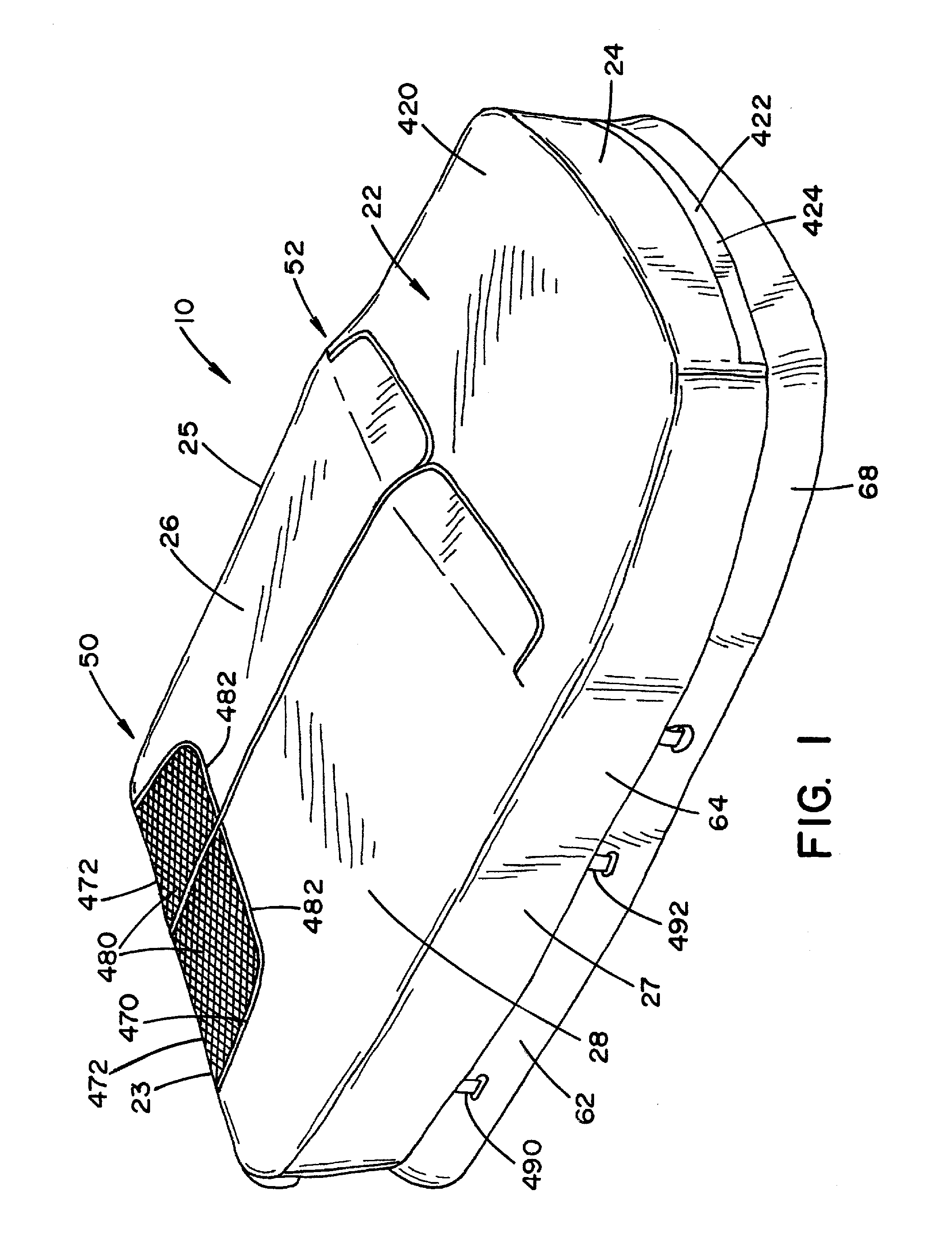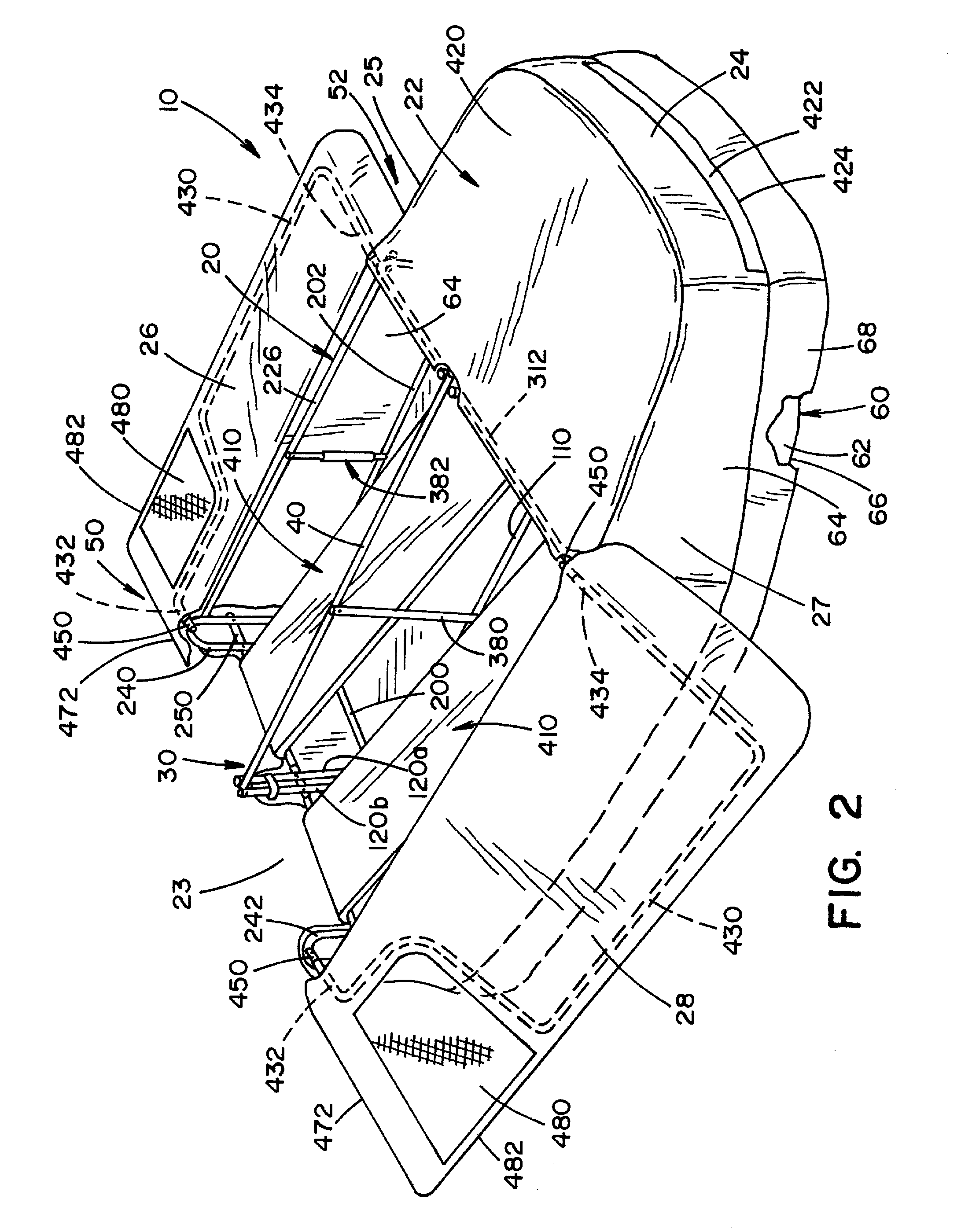Hunting blind
a blind and hunting technology, applied in the field of hunting blinds, can solve the problems of inferior structural characteristics, difficult assembly in the field, and difficult transportation of prior art hunting blinds into the field, and achieve the effects of reducing weight and cost, good waterproof protection, and reducing heat buildup
- Summary
- Abstract
- Description
- Claims
- Application Information
AI Technical Summary
Benefits of technology
Problems solved by technology
Method used
Image
Examples
Embodiment Construction
[0046]With reference to figures, shown are several embodiments of both a two-man layout hunting blind 10 and a one-man layout hunting blind 510. As discussed above, while one-man and two-man layout configurations are preferred, the invention of this application has broader application wherein it should not be limited to the embodiments shown.
[0047]With reference to FIGS. 1-11 and 23, shown is two-man layout blind 10 having an inner frame structure 20, an outer cover 22, and doors 26 and 28 pivotably connected to the inner frame structure.
[0048]Outer cover 22 of layout blind 10 and 510 can utilize any surface configurations known in the art, including camouflage patterns and those discussed above. However, this application is not to be limited to a particular camouflage pattern and could be utilized with a wide-range of camouflages, prints and colors. As is known in the art, camouflage and / or prints can change based on a wide-range of factors, including seasonal changes and specializ...
PUM
 Login to View More
Login to View More Abstract
Description
Claims
Application Information
 Login to View More
Login to View More - R&D
- Intellectual Property
- Life Sciences
- Materials
- Tech Scout
- Unparalleled Data Quality
- Higher Quality Content
- 60% Fewer Hallucinations
Browse by: Latest US Patents, China's latest patents, Technical Efficacy Thesaurus, Application Domain, Technology Topic, Popular Technical Reports.
© 2025 PatSnap. All rights reserved.Legal|Privacy policy|Modern Slavery Act Transparency Statement|Sitemap|About US| Contact US: help@patsnap.com



